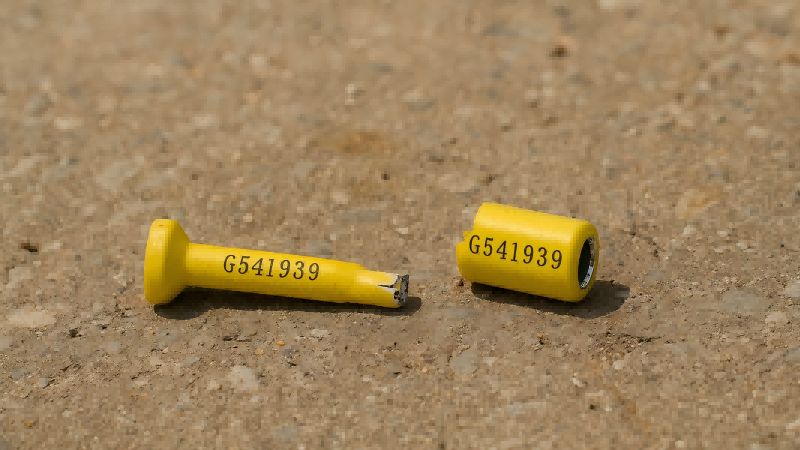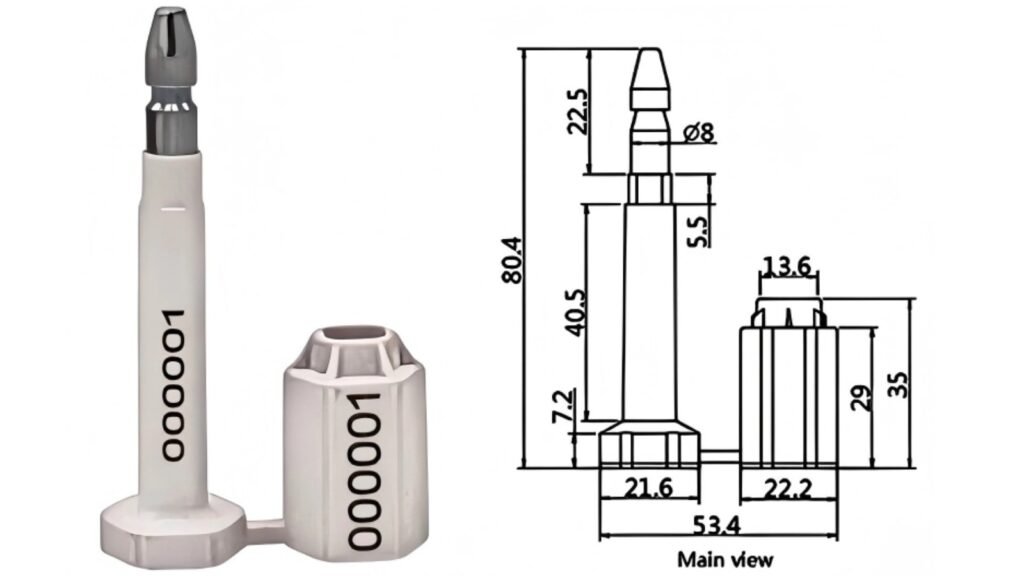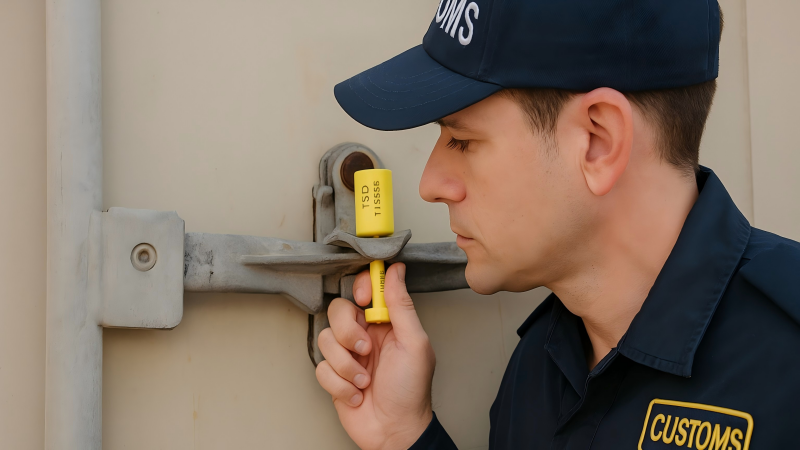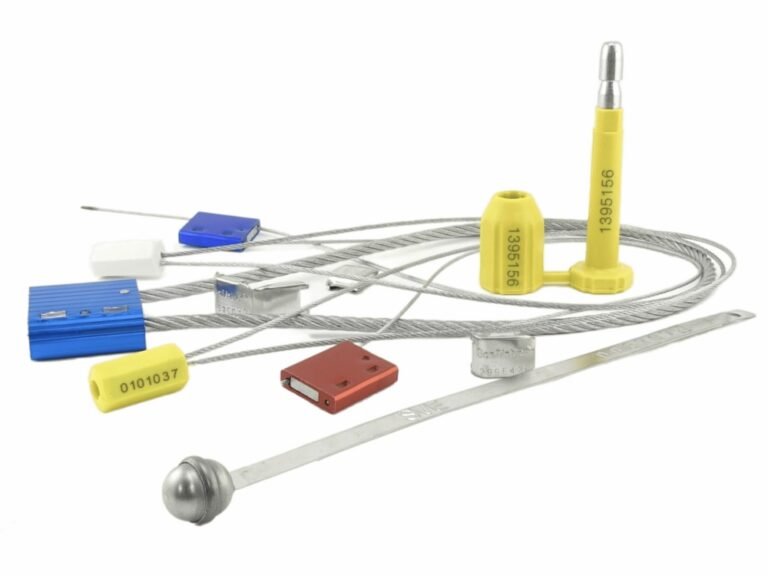Your customer rejects a shipment over a broken seal, but the carrier insists it was intact at delivery. Now you are caught in a costly dispute, with no way to prove when the tampering happened, making you liable for the loss.
A security seal is a single-use tool that provides tamper evidence, not physical prevention. Its core purpose is to act as a "letter of responsibility." Its unique number creates irrefutable proof of integrity, making it a critical tool for managing risk and accountability in business.

Based on my years in this industry, the biggest mistake people make is thinking a security seal is just a strong lock. It’s not. The seal's real power comes from its nature as a one-time, uniquely numbered "letter of responsibility." Its entire function boils down to one simple process: lock it at Point A, then inspect it at Point B. If the seal at Point B is intact and the number is correct, the responsibility for that leg of the journey was fulfilled. If the seal is broken or replaced, that responsibility was broken. In complex global trade, this small device is the simplest, cheapest, and most effective physical tool for dividing financial and legal risk. There is no substitute.
Defining the Security Seal: A Tool for Tamper Evidence, Not Prevention
You're frustrated because a thief cut through your seal and stole your goods. You think the seal failed, questioning its value and looking for a stronger, unbreakable "lock."
A security seal's job is not to physically stop a determined thief; it's to provide undeniable proof that an attempt was made. It's a tool for tamper evidence, designed to be destroyed upon entry, creating a clear record of the security breach.

This distinction is the most important concept to grasp. A determined thief with bolt cutters and enough time can defeat almost any security device. Trying to create an "unbreakable" seal is a losing battle. The true purpose of a seal is different.
What is Tamper Evidence?
Tamper evidence means that unauthorized access will leave obvious, irreversible signs. A high-quality security seal is engineered to be a one-time-use device.
- Unique Identification: It has a unique serial number that cannot be legitimately replicated.
- Designed to Break: When removed, it must be destroyed. It cannot be re-sealed or glued back together.
- Visual Proof: A broken or missing seal provides immediate, unquestionable proof that the container's integrity was compromised.
Instead of preventing entry, it prevents secret entry. The seal sacrifices itself to tell a story. It proves that between Point A and Point B, something happened. This evidence is far more valuable in a business context than a slightly stronger lock that can still be bypassed without leaving a clear trace. It shifts the conversation from "Did something happen?" to "When did it happen, and who was responsible at that time?"
The Anatomy of a High-Quality Security Seal: Key Features to Look For
You treat seals as a commodity, buying the cheapest option available. But these low-quality seals can be easily bypassed without breaking or replicated, creating a false sense of security and failing you in a dispute.
A high-quality security seal has specific features: a unique, laser-engraved serial number (not just printed), internal anti-spin locking mechanisms, and robust materials. These features ensure it cannot be easily defeated or tampered with undetectably.

When I was a QC inspector, I learned to spot the difference between a real security tool and a cheap lookalike. Not all seals are created equal. When you are sourcing seals to protect your assets, you need to look for specific features that ensure the seal can perform its function as a "letter of responsibility."
Key Features Checklist
| Feature | Why It's Critical | What to Look For |
|---|---|---|
| Unique Serial Number | This is the seal's "identity." It must be unique to prevent fraudulent replacement. | Numbers should be laser-engraved, not just surface-printed. Laser engraving is much harder to alter. |
| Anti-Spin Mechanism | Prevents the "spin-out" trick, where a thief spins the seal at high speed to unscrew it without breaking it. | A high-quality bolt seal should specify "anti-spin" or a similar feature. The two parts should lock together, preventing independent rotation. |
| Material Strength | The seal must be strong enough to withstand accidental breakage during normal transit. | Look for a hardened carbon steel pin and a robust plastic coating that shows evidence of stress or cutting. |
| ISO 17712 Compliance | This is the international standard for high-security seals, a requirement for many customs programs. | The seal should be clearly marked as "ISO 17712" compliant and specify its security rating (e.g., "H" for High Security). |
Choosing a cheaper seal without these features is like signing a blank letter of responsibility. It offers the illusion of security but fails the moment it is challenged, leaving you exposed.
Critical Role 1: Protecting Assets and Mitigating Financial Loss
You view seals as a minor operational cost. You haven't connected this small expense to the prevention of multi-thousand-dollar losses from theft, damage, or claims you can't dispute.
Security seals directly protect assets by deterring opportunistic theft and providing the necessary evidence to file successful insurance claims. By preventing "mysterious losses," they turn a potential total loss into a recoverable, insurable event, mitigating financial risk.

The most direct role of a security seal is to protect your bottom line. The financial impact is felt in several ways.
- Theft Deterrence: Most cargo theft is opportunistic. It's a crime of easy access. A properly applied security seal is a powerful deterrent. The thief sees the seal and knows they cannot get in and out without leaving clear evidence. In the majority of cases, they will move on to an easier, unsealed target. That $2 seal just protected a $50,000 pallet of goods.
- Turning Mystery into Evidence: Without a seal, a missing box is a "mysterious disappearance" or "shrinkage." Insurance companies are very reluctant to pay claims for losses that have no evidence. A broken seal, however, is clear evidence of a specific event. It provides proof of loss, which is essential for a successful insurance claim. It converts an unprovable business loss into a documented, insurable event.
- Preventing Fraudulent Claims: Seals also protect you from customers or partners who might falsely claim a shortage. If the seal arrives intact with the correct number, you have strong evidence that the shipment was delivered exactly as it was sent.
Critical Role 2: Establishing a Clear Chain of Custody and Accountability
Your cargo passes through five different companies before reaching its destination. When something goes missing, everyone points fingers, and you have no way to prove who is responsible for the loss.
A security seal establishes a clear a chain of custody. The act of documenting and accepting an intact seal at each handover point is a formal transfer of liability. It creates a simple, physical audit trail of responsibility.

This is where the "letter of responsibility" metaphor becomes literal. Every time that seal is checked and verified, a new party is signing that letter. Here’s how it works:
- You (The Shipper): You load the container, apply Seal #XYZ789, and record this number on the Bill of Lading. You have just originated the letter of responsibility.
- The Trucker: The driver arrives. Before signing for the cargo, they must check that Seal #XYZ789 is intact. By signing the paperwork, their company is now legally responsible for delivering that specific, intact seal to the port. The responsibility has been transferred.
- The Port: A port authority checks the seal upon entry. The responsibility is transferred again.
- The Shipping Line: Before the container is loaded onto the vessel, the seal is checked one last time.
If the truck driver tries to deliver a container with a broken seal or a different number, the port can refuse to accept it. The break in the chain of custody is immediately identified, and the liability rests squarely with the last party to have accepted an intact seal. The finger-pointing stops because the seal's physical state tells the whole story.
Critical Role 3: Ensuring Compliance with International Security Standards
You're facing shipping delays because your containers are frequently flagged for customs inspections. You're worried about the fines and complications of not meeting international security requirements.
Using high-security seals is a mandatory component of most international supply chain security programs, such as C-TPAT in the USA. Proper sealing demonstrates a secure supply chain, often resulting in fewer inspections, faster customs clearance, and reduced risk of fines.

After 9/11, global customs agencies became much more focused on securing the international supply chain. They need to trust that a container holds only what the manifest says it holds. A security seal is a key part of building that trust.
- C-TPAT and AEO Programs: The Customs Trade Partnership Against Terrorism (C-TPAT) in the US, and similar Authorized Economic Operator (AEO) programs worldwide, offer "green lane" benefits to companies that prove their supply chains are secure. A core requirement of these programs is the implementation of a strict sealing process using high-security seals that meet the ISO 17712 standard.
- Benefits of Compliance: Being a member of these programs means your cargo is seen as lower risk. This often leads to a significant reduction in the number of inspections, which saves you from costly delays and inspection fees.
- Demonstrating Due Diligence: In the worst-case scenario where contraband is found in your container, an intact, high-security seal and a documented sealing protocol are your best legal defense. It helps you prove to authorities that you took all necessary precautions and the illegal items must have been introduced at a point after the chain of custody was broken.
Conclusion
A security seal is not a lock; it is a critical business tool. It's a "letter of responsibility" that protects assets, defines accountability, and ensures compliance, playing a vital role in safeguarding your profits.
Sign Your Letter of Responsibility with ProtegoSeal
Don't leave your financial and legal liability to chance. Use a security seal you can trust to act as your physical proof of integrity. At ProtegoSeal, we provide high-quality, compliant security seals that turn every shipment into a clear statement of accountability. Contact us to secure your chain of custody.

